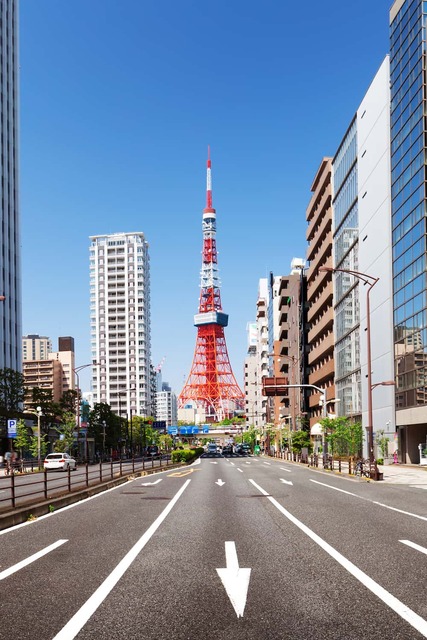Driving in Japan
Thanks to Japan's efficient public transport system in larger cities, cars are generally not required for most people visiting Japan. Travellers looking for more freedom and access to even more destinations would greatly benefit from renting a car. Driving in Japan is a pleasant experience as the road conditions are excellent and other drivers are well-mannered. Learn everything you need to know below.
Most common questions
In Japan, each driver must bring a valid local driving license and an international driver's license. If this is not brought, the car cannot be rented, and paid rent is not refundable. In connection with ordering a car rental, please confirm that you have a minimum of one year of experience driving a car and informing Japanspecialist of your age. English GPS can be ordered in some cases but can not be guaranteed everywhere.
Be aware that there may be road taxes in several places, and there may be parking fees in larger cities. Both parts are usually settled on the spot in cash.
In Japan, you drive on the left side of the road, and driving under the influence of alcohol is strictly forbidden and severely punished.
Japan is generally safe for driving, but consider:
Safety
Driving on the left, good road conditions, but traffic rules and navigation in Japanese can be challenging.
Ease
Parking can be expensive, especially in cities. Public transportation is excellent and convenient.
Regulations
International driver's license or Japanese translation might be required. Research and follow traffic rules strictly.
In Japan, cars drive on the left side of the road, and therefore, the steering wheel and driver's seat are also on the opposite side (right). You're allowed to drive from 18 years of age. Drinking and driving is against the law.
Road signs and traffic rules follow international standards, and most signs are bilingual (Japanese and English). Before crossing a railway track, the driver has to completely stop the vehicle.
Speed limits are 80-100 km/h on highways, 40 km/h within cities/towns, 30 km/h in small streets/sideways and 50-60 km/h elsewhere.
For use of expressways, some tunnels, and a few scenic drives, you'll have to pay a toll fee.
Road conditions are good, although some smaller streets in the cities can get narrow and even difficult to pass due to larger vehicles. Traffic jams can be a problem, in and around city centres.
Foreigners are only allowed to drive in Japan if they hold an International Driving Permit (IDP), which is valid for a maximum of one year. After this one year period has expired, you will only be eligible for purchasing a new IDP if you return to your home country for at least three months consecutively.
Important: IDP can only be purchased in your home country. They are not issued in Japan. You can usually have the IDP issued at your country's national automobile association for a limited fee (EUR 20-30 in most countries). Japan only allows IDP issued in accordance with the 1949 Geneva Convention, and most countries issue such IDP.
If the IDP in your country is not based on the Geneva Convention, an official Japanese translation of your national license will be required. In Japan, these translations can be arranged through JAF (Japan Automobile Federation).
Countries that issue IDP not based on the Geneva Convention are Belgium, Estonia, France, Germany, Monaco, Switzerland and Taiwan.
The validity period of the translated license is also one year.
You will find gas stations across Japan. The majority of gas stations have full service, although self-service stations have also become more common recently.
If you want to get gas at a full-service station, it would be convenient to remember some relevant Japanese. When you enter the gas station, an attendant will show you to a stall. Then, shut off the engine, open the car window, say "konnichiwa" (good afternoon) and tell the attendant how much gas ("mantan" means full tank) and what type of gas (for example, "regular") you would like. Then clarify the payment method ( "cash" / "credit card").
Self-service stations ("serufu" in Japanese) only have Japanese language information. If you can' manage, there should be a gas station assistant available to help you. For cash payments, a change machine will be available separately.
Parking in the cities can get expensive. In the countryside or smaller towns and villages, free parking is widely available. A flat fee system is more common in National Parks or near famous tourist sights (200-750 Yen per use).
Hotels in the cities also use a flat rate per day/night for their parking facilities (mostly around JPY 1000 per night). Countryside hotels usually have free parking facilities.
There are some unique types of parking lots in Japan, for example, elevator parking lots in which cars are parked in towers. Drivers have to put their car onto a lift, which will - slowly and automatically - put the car in the tower. Upon coming back to the parking lot, the car will be returned to you by the lift.
Another unique type of parking has a system of using low barriers under the cars. These barriers are raised to put a physical block in place under the vehicle once you have parked your car. After paying your parking fee (at a payment machine or at the parking space), the barrier/block will be lowered, enabling you to drive away safely.

